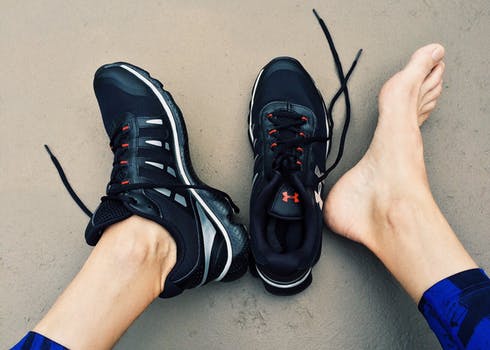By WIN Contributor: Jeff Dill, Physiotherapist
The Bursa: The Ins and Outs
Have you ever heard the word “bursitis” and not had the foggiest idea of what that was or what it meant? Ever get a pain in the side of your hip, or back of your ankle without having any kind of trauma or obvious injury? If so, you may have irritated a bursa. But what is a bursa, what role does it play in the body, and how do we know if perhaps one of our bursae are irritated?
What is a Bursa & What Role Do They Play
To put it simply, a bursa is a fluid-filled sac: think, water balloon. Their outer layer, “synovial membrane”, secretes a watery, lubricating fluid- “synovial fluid”. This fluid assists in reducing friction between moving structures, including bone, ligaments and tendons. As a result, bursae are, logically, located throughout the body in & around the major joints between the bones, ligaments and tendons.
Common Sites of Irritation
Although all bursae may become injured there are certain areas which are more susceptible to injury including in the shoulder, “sub-acromial bursitis” (common in overhead athletes), the back of the ankle, “retrocalcaneal bursitis”, and in the hip, “trochanteric bursitis” (thought to be associated with weakness in the smaller gluteal muscles). (1)
Types of Injury
Bursae can be injured by a traumatic event or, more commonly, through overuse. (2)
In an acute injury, a trauma to the bursa occurs, such as a direct fall. This insult to the bursa can create bleeding into the bursa, inflammation/irritation, and pain.
This is best treated through compression, ice and rest. (2)
More commonly, bursae become irritated through overuse activities. Whether it’s a repetitive motion at work, or an athlete who performs repetitive movements, the constant compression on the bursa can eventually overload its friction-reducing capacity and result in irritation, called bursitis. (3)
Common Presentation of Bursitis and Treatment
When a bursa becomes irritated you will typically feel pain and swelling localized to the area of the bursa. These symptoms tend to worsen with activity involving structures around the bursa.
Treatment of bursitis (caused by overuse) is usually conservative. The overall goals are to reduce inflammation, eliminate any extra loads on the bursa, and a reduction in activity levels.
In order to achieve these goals, strategies such as icing, using modalities such as an electric stim machine, NSAIDs, and stretching may be used individually and/or in combination with one another.
Once pain and swelling levels come down a progressive stretching and strengthening program is begun. (2)
In situations where symptoms are not improving using conservative methods, corticosteroid injections may be used. (2)
If you think you may be suffering from bursitis feel free to visit us at WIN Health Solutions and have an assessment done. We can assist in reducing your symptoms, providing tips on getting back to your normal routine, and give you stretches & exercises to help prevent reoccurrence.
1) Kong A, Van der Vliet A, Zadow S. MRI and US of gluteal tendinopathy in greater trochanteric pain syndrome. Eur Radiol 2007; 17: 1772-83.
2) Khan, Karim, & Brukner, Peter. Clinical Sports Medicine. 4th ed., McGraw-Hill Medical, 2012.
3) Benjamin M, Kaiser E, Milz S. Structure-function relationships in tendons: a review. J Anat 2008; 212: 211-28


